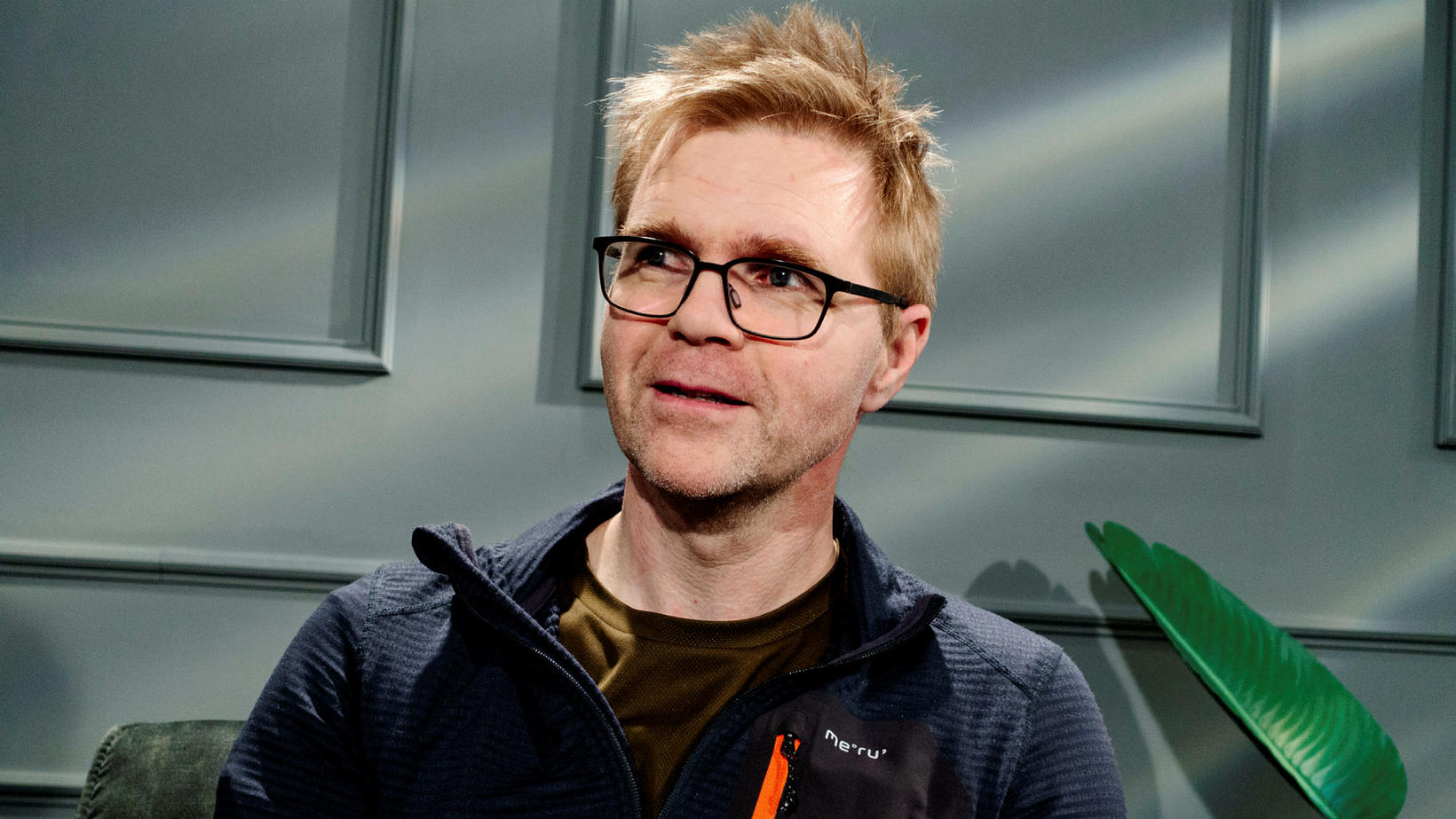The magma is likely flowing from a depth of 15 km
The eruption at Sundhnúkagígar crater row on Good Friday, March 29, 2024. mbl.is/Hörður Kristleifsson
There are still no signs that the eruption at the Sundhnúkagígar crater row is coming to an end. Benedikt Gunnar Ófeigsson, the director of deformation measurements at the Icelandic Metoracal Office, believes its likely that the magma is flowing from a depth of 15 km.
“Based on what I was looking at yesterday, it seems like it’s still stable, and I couldn’t see that it’s getting any less, so it seems like it’s stable. Deformation is also in balance, so we’ve stopped seeing moves around Svartsengi. It’s very flat, so it’s just pretty stable,” says Ófeigsson, who was on vacation in Milan when mbl.is caught up with him.
“There is no sign of an inflation, and there is no sign that the volcanic eruption is about to end,” he said. “But you have to be careful about such statements. This can just stop just like that there doesn’t have to be any notice.” On that note, he added: “This could end later today.”
Deeper than 10 kilometres
According to Ófeigsson, the flow of magma from the lower chamber is stable and there is no magma accumulating in the upper chamber, rather it flows directly out through the fissure.
“It’s coming from this larger magma chamber and I would think that the chemistry should tell us soon that it’s coming from a considerable depth. I think it’s very likely,” he says. However, the data is still pending.
“I would think it’s coming from a lot of depth. Deeper than 10 kilometers, even deeper than 15 kilometers,” he adds.
In addition, no signs of deformation are visible in the crust, such as inflation. Ófeigsson compares the current eruption to the 2021 eruption in Mt Fagradalsfjall. Not much inflation was detected there until about two months after the eruption began.
“It could be the case here [at Sundhnúkur] and it could be the same sort of thing as in Mt Fagradalsfjall.”
Benedikt Gunnar Ófeigsson, the director of deformation measurements at the Icelandic Met Office. mbl.is
Why does this eruption last so long?
This is the fourth eruption in the Sundhnúkagígar crater row in less than four months, but the first three lasted only a few days. Why does this eruption differ from the other three?
“I think we can never really make a statement about that. This is just some development of the system. There are some complicated circumstances in the crust that govern how this eruption has panned out. We may not have any measurements that can tell us exactly what is going on.”
“It’s just a development, and these kinds of systems don’t always behave in the same way. Gradually, it’s developing in a certain direction, sometimes fast and sometimes slow.”
Volcanologist Þorvaldur Þórðarson told mbl.is last week that he believed the activity in the Sundhnúkagígar crater row would end when the eruption ended. In response to Þórðarson’s comments, Ófeigsson answers:
“I don’t know exactly what data he is referring to here. It can be completely true, but we can’t make any absolute statements about it.”





/frimg/1/47/98/1479816.jpg)
/frimg/1/48/27/1482789.jpg)


/frimg/1/48/63/1486389.jpg)
